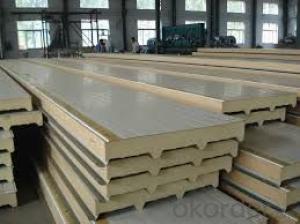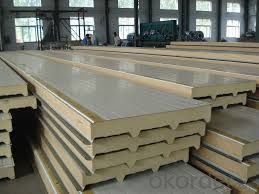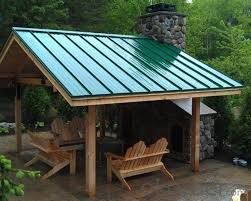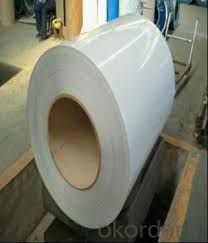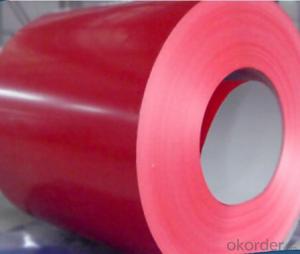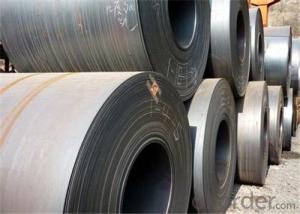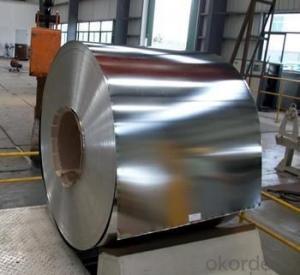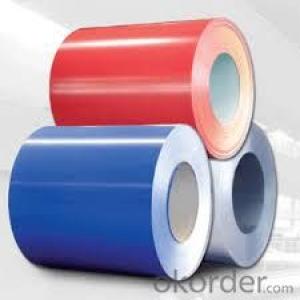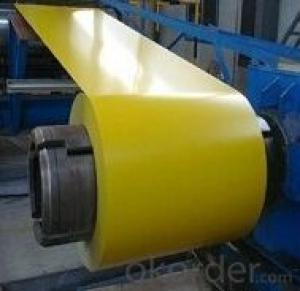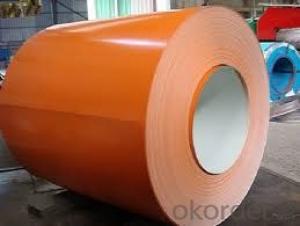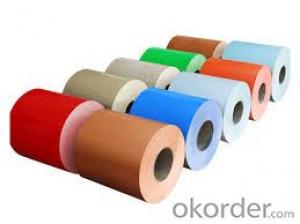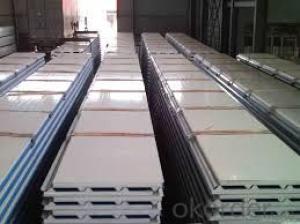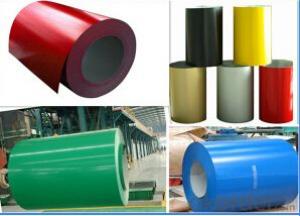Pre-Painted Galvanized (PPGI) Color Coated Steel Coil/ PPGI Prepainted Galvanized Steel Coil
- Loading Port:
- China main port
- Payment Terms:
- TT OR LC
- Min Order Qty:
- 25 m.t.
- Supply Capability:
- 1000 m.t./month
OKorder Service Pledge
OKorder Financial Service
You Might Also Like
Product Description
Specifications:
1. Thickness: 0.12mm-1.3mm
2. Width: 600mm-1250mm
3. Length: According to client's demands
4. Top paint: 15 to 25 um (5 um + 12-20 um)
Back paint: 7 +/- 2 um
5. Gloss: Normal or High gloss
6. Zinc coating: Z50-Z275G/psm
7. Inside Diameter: 508mm/610mm
8. Outside Diameter: 1000mm-1500mm
9. Coil weight: 3-8 tons
10. Payment: T/T, L/C, D/P, Paypal, Western Union
11. Trade Term: FOB, CFR, CIF
12. MOQ: 25 Mt
13. Package: Export standard package or as request
14. Shipment: By container
15. Standard: AISI, ASTM, BS, DIN, GB, JIS
16. Grade: JIS G3322, CGLCC, ASTM A755, CS-B
Company Introduction:
CNBM Steel is mainly engaged in producing and exporting galvanized steel coil/sheet(GI), prepainted galvanized steel coil/sheet(PPGI), corrugated galvanized sheet and tinplate coil/sheet. CNBM Steel has also become the agent of hot rolled coil/sheet, cold rolled coil/sheet, I beam, angle steel and channel steel.
Company Culture:
Take customers as the honoured, Take quality as the foundation!
Strive For Survival On The Basis Of Quality!
Why Us:
1. ISO, BV, CE, SGS approved
2. Competitive price and quality from our own factory
3. Efficient service team online for 24 hours
4. Smooth production ability(50000tons/month)
5. Quick delivery and standard exporting package
6. Flexible payment with T/T, L/C, Paypal, etc
Name | 0.3mm Thickness PPGI Prepainted Galvanized Steel Coil |
Resin constructure | Double painting and double baking process |
Productivity | 150,000Tons/year |
Thickness | 0.12-1.3mm |
Width | 600-1250mm |
Coil Weight | 3-8 Tons |
Inside Diameter | 508mm Or 610mm |
Outside Diameter | 1000mm-1500mm |
Zinc Coating | Z50-Z275G/psm |
Painting | Top: 15 to 25 um (5 um + 12-20 um) back: 7 +/- 2 um |
Standard | JIS G3322 CGLCC ASTM A755 CS-B |
SurfSurface coating | PE, SMP, HDP, PVDF |
Back side coatingcolor | Light grey, white and so on |
Application | PPGI is featured with light-weight, good looking and |
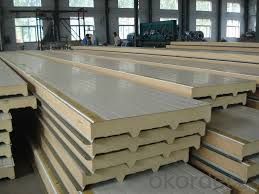
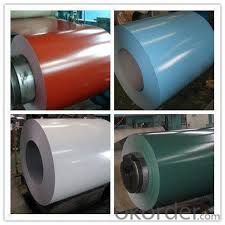
- Q: i am debating weather to get the hercules rmx or the steel and from what i have read, the only differences between them is the rmx has a sound card (built in interface-to connect to the computer, correct me if im wrong) and that the steel has more effects. however, i cannot find out which effects it has so it would be a big help if someone can answer this for me.thanx
- I guess that since Steel doesn’t have headphones connection and a built-in soundcard, one won’t be able to play a track on one deck and prelisten the track on the other without using an external usb soundcard, right? I was wondering what’s the point in releasing a product like this if you also have to buy a bunch of equipment to be able to do sth “fondamental”: play while preparing your next song. However since the steel is meant for DJ’s who already have a great soundcard, but I don’t see why a Steel+sound card is ONLY for pro’s. Yes it’s designed for pro’s but you can use it as a beginner. Some consoles you also need to consider: Hercules Steel/RMX, Numark OMNI/Steath. It's all personal decision. Peace, Love Happiness
- Q: What are the common size limitations for steel coil production?
- The common size limitations for steel coil production can vary depending on several factors such as the type of steel being used, the manufacturing process, and the equipment available. However, there are some general size limitations that are commonly observed in the industry. One of the primary constraints is the width of the steel coil. The width of the coil is typically limited by the size of the rolling mill or the slitting equipment used for production. Standard widths for steel coil production range from around 600 millimeters (23.6 inches) to 2,000 millimeters (78.7 inches). However, widths outside of this range can also be achieved through specialized equipment and processes. Another limitation is the thickness of the steel coil. This can be influenced by the type of steel, the intended application, and the manufacturing capabilities. Common thicknesses for steel coils range from 0.15 millimeters (0.006 inches) to 6 millimeters (0.236 inches). Thicker or thinner coils can be produced, but they may require specialized equipment and processes. The weight of the steel coil is another important consideration. The maximum weight of a steel coil is typically determined by the capacity of the production and handling equipment, as well as transportation limitations. Standard coil weights range from a few hundred kilograms to several tons. However, it is possible to produce coils that exceed these limits by using larger equipment or dividing the coil into multiple smaller coils. In addition to width, thickness, and weight, there may also be limitations on the length of the steel coil. This can be influenced by factors such as the size of the production line, the handling and transportation capabilities, and customer requirements. Standard coil lengths typically range from a few meters to several tens of meters. However, longer coils can also be produced by using specialized equipment and processes. It is important to note that these size limitations are not fixed and can vary depending on the specific requirements of a project or customer. Manufacturers often work closely with customers to determine the optimal size limitations for their steel coil production, ensuring that the final product meets the desired specifications.
- Q: What are the different types of steel coil surface appearances?
- The different types of steel coil surface appearances include mill finish, pickled and oiled, galvanized, painted, and textured.
- Q: How can I arbitrate quality of steel before purchasing it??
- The quality of the alloy can be very well be judged by its appearance and lustrous surface. The more luster on the surface the more refine will the steel be. To judge its tenacity and endurance, the alloy can be subjected to a series of procedures involving stress and shock. The reaction to these processes can determine whether the steel be fit for the purpose required.
- Q: Please give me the name of the steel, and the percentage of materials from what It consists, if you can give me five types of steel it will be better so I can decide. Thanks.
- Without okorder .. Plus few other useful resources. In the end, there's no one best steel, not even 5. It all depends on the knife design, use, edge thickness, what you cut, etc...
- Q: They are showing on tv a special on how the new World Trade Center, building 1, is being built. Focusing on the steel and the guys fitting everything together.Where do builders go to buy all that steel framing? We do not build really tall buildings where I live so most of the steel is cut and welded on the job site. At World Trade Center 1, they seem to get the steel on trucks; already cut and welded.
- The steel is all custom fabricated in what are called structural steel fabrication shops. Each Building is designed by architects then the frame is designed by engineers to support whatever load is being applied to the building. After the engineering is done it goes out for a bid package where a fab shop estimates how much to charge for the fabrication of the steel and the erection of the steel. Once a company wins the bid, it then has to design how the steel will connect with one another and have it approved by an engineering firm to assure the connections are strong enough. Once all of that happens the fab shop orders raw steel beams and angle iron and steel plate at stock lengths. Beams are then cut into the right length and holes drilled in the proper places. The beam is then marked with a number that tells the erectors where it goes. The steel is then shipped out in batches to the construction site where it is unloaded and shook out into an organized place to grab them with a crane. They are then put together like a toy model, there are instructions that say what beam goes where and what size bolt to use. The welding you see being done is on really critical moments that need extra strength. That is about how it goes in a nutshell. It is a bit more complicated than that but it gives you an idea.
- Q: What are the safety standards for steel coil manufacturing?
- To ensure the well-being and protection of workers, as well as the quality and reliability of the products produced, the safety standards for steel coil manufacturing have been designed. These standards encompass various aspects of the manufacturing process and include both general safety guidelines and industry-specific requirements. One of the primary safety standards for steel coil manufacturing involves implementing proper safeguards for machinery and equipment. This entails ensuring that all machinery and equipment used in the manufacturing process are adequately maintained, regularly inspected, and equipped with safety features such as emergency stop buttons and safety guards. Workers must also receive sufficient training on the safe operation of these machines and be aware of potential hazards. Another crucial safety standard is the utilization of personal protective equipment (PPE). Workers engaged in steel coil manufacturing must be provided with appropriate PPE, including safety goggles, gloves, ear protection, and protective clothing, in order to safeguard them against potential hazards such as flying sparks, noise, and chemical exposure. Additionally, safety standards for steel coil manufacturing emphasize the proper handling and storage of materials. This includes guidelines on how to safely lift and transport heavy steel coils, as well as regulations for stacking and storing them to prevent accidents and injuries. Fire safety is also of utmost importance in the safety standards for steel coil manufacturing. Measures should be implemented to prevent and control fires, such as regular inspections of electrical systems, proper storage and handling of flammable materials, and the availability of fire extinguishers and emergency evacuation plans. Furthermore, safety standards necessitate regular safety training and awareness programs for all employees involved in steel coil manufacturing. This ensures that workers are well-informed about potential hazards, safety procedures, and emergency protocols. Regular safety audits and inspections are also conducted to evaluate compliance with these standards and identify areas for improvement. Overall, the safety standards for steel coil manufacturing strive to establish a safe working environment, minimize the risk of accidents and injuries, and ensure the production of high-quality steel coils. Compliance with these standards is crucial for preserving the well-being of workers, protecting the environment, and upholding the reputation of the manufacturing industry.
- Q: What are the common welding techniques used for steel coils?
- Steel coils can be welded using different techniques, such as shielded metal arc welding (SMAW), gas metal arc welding (GMAW), and flux-cored arc welding (FCAW). SMAW, also known as stick welding, involves creating an arc between the welding electrode and the base material using an electric current. The electrode is coated with flux, which shields the weld from atmospheric contamination. This versatile technique can be used for both thick and thin steel coils. GMAW, commonly known as MIG welding, is an automated process that uses a continuous wire electrode and shielding gas. The electrode is fed through a welding gun, and an electric current creates an arc with the base material. This fast and efficient technique is suitable for high-volume production of steel coils. FCAW is a variation of GMAW that uses a tubular electrode filled with flux instead of a solid wire. The flux provides shielding gas and additional fluxing agents to protect the weld from impurities. FCAW is often preferred for welding thicker steel coils due to its better penetration and higher deposition rates. In addition to these techniques, laser welding and electron beam welding can be used for specific applications in steel coil manufacturing. These methods offer precise and high-quality welds but are typically more expensive and require specialized equipment. Ultimately, the choice of welding technique depends on factors such as material thickness, production volume, and specific product requirements.
- Q: Are steel coils susceptible to damage during storage or transportation?
- Steel coils can be damaged easily when they are stored or transported. They are quite heavy and can easily become deformed, bent, or scratched if they are not handled properly. It is also important to stack and secure them correctly during transportation to prevent them from shifting or moving, as this can also lead to damage. Moreover, the steel coils can be affected by moisture, extreme temperatures, or corrosive substances, which can compromise their quality. Therefore, it is vital to handle, store, and transport steel coils with great care to minimize the chances of damage and maintain their overall integrity and usability.
- Q: I have a set of steel pans with copper bottoms. When I cook with oil it always burns the oil to the pan and takes days to clean. I don't think I should use steel wool, since it might scratch the surface. Does anyone know a faster way to clean scorched oil off a steel pan?
- they have drywall (mudding) sponges to sand mud when you fix walls in the house, they are grey, square, and do not scratch. They seem to work better than any scrubber ever. Make sure you use a degreaser dishsoap like dawn. Maybe try putting your heat lower in the pan and cooking things more slowly?
Send your message to us
Pre-Painted Galvanized (PPGI) Color Coated Steel Coil/ PPGI Prepainted Galvanized Steel Coil
- Loading Port:
- China main port
- Payment Terms:
- TT OR LC
- Min Order Qty:
- 25 m.t.
- Supply Capability:
- 1000 m.t./month
OKorder Service Pledge
OKorder Financial Service
Similar products
Hot products
Hot Searches
Related keywords
